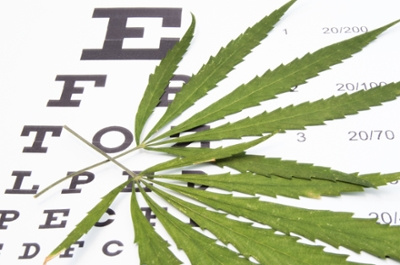Glaucoma is such an eye disease which can lead to the reduction of peripheral vision and even blindness as eye nerve is destroyed over time. Around 3 million Americans suffer from this disorder, and 60 million all over the world live with this disorder. The vast majority of patients with glaucoma are people at the age of 60.
The eye disease damages the optic nerve and destroys the cells of the eye’s retina. Glaucoma may often lead to eyesight loss. This condition is provoked by abnormally high intraocular pressure, which is the consequence of liquid disbalance inside the eye. To heal glaucoma, it is necessary to reduce pressure.
Traditional treatments for glaucoma
Glaucoma is commonly treated with beta-blocker-containing eye drops, such as timolol. The problem is that this medicine suppresses the adrenaline. This may lead to depression and asthma exacerbation. As an alternative treatment of glaucoma doctors prescribe the myotics. This medicine may blurry vision, worsen night vision and contribute to the development of cataracts. Physicians also prescribe pills containing carbonic anhydride inhibitor for glaucoma. They cause loss of appetite, nausea, and indigestion, blood diseases.
Researchers are currently working on the medicine that would have minimum side effects and, at the same time, systematically reduce intraocular pressure to treat glaucoma. Cannabis, and namely its compound tetrahydrocannabinol (THC), can provide the necessary effect that is why some patients with glaucoma choose it as a method to relieve their condition.
Can smoking marijuana really help in glaucoma treatment? It is a known fact, that the use of cannabis in medical practice has a thousand-year history. However, reliable data explaining the mechanisms of its physiological action, in particular, its influence on pressure, were obtained not so long ago.
Scientific evidence of marijuana therapeutic effect
The first scientific works on cannabis influence on glaucoma have appeared in the 70s. The research confirmed a significant (around 25-30 %) reduction in pressure inside the eye for 3-4 hours. The result was observed in both cases: when the participants were asked to smoke marijuana and to take tetrahydrocannabinol in another form: pill, eye drops, injection.
But are there any modern studies? The new work, presented by the researchers of Indiana University, published in 2018, studied the effects of tetrahydrocannabinol and cannabidiol on the state of pressure inside the eye.
It has been hypothesized that THC probably acts through one of the cannabinoid receptors in eye tissues, which are responsible for the regulation of intraocular pressure. Along with this, cannabidiol is the second most important component of cannabis, which, as was established earlier in most of the scientific works, has no serious effect on the state of pressure.
During the experiment, the scientists measured the animals’ intraocular pressure after local application of THC. The results show that THC reduced intraocular pressure (up to 28% of the initial level) of laboratory animals. The researchers found out that the observed results appeared due to the activation of the CB1 and GPR18 receptors in the eye tissues. In addition, it was found that experiments with males appeared to be more successful.
In general, the authors found that the compound of cannabis can be used as medicine for glaucoma. At the same time, another compound, cannabidiol (CBD) may inhibit the effects expected from the influence of THC to reduce intraocular pressure in the treatment of glaucoma. So, CBD was proved ineffective for the treatment of this eye disorder.
Downsides of treating glaucoma with marijuana
If you use marijuana as a treatment of choice for glaucoma, the possible issues are the following:
- short time effects (one has to consume about 20 mg of THC 6 to 8 times a day)
- it may influence mental state negatively
- it imposes restrictions: the person is unable to operate machinery or drive
- drops may cause eye irritation
- a high heart rate
- low arterial blood pressure and, consequently, reduction of a blood flow to an optic nerve.
Smoking marijuana too often can also become a reason for serious lung problems and hypotension, which is low blood pressure. Pills are not really efficient because of the unpredictable absorption. The most perspective area of glaucoma treatment with the help of marijuana is cannabis eye drops (with THC component). Still, all modern eye drops for glaucoma have a weak effect as only 5 % of the liquid penetrates the eye tissues.
The usage of marijuana in the last stages of glaucoma is considered reasonable. In this case, this entails mostly the maintaining of the general condition of the patient with glaucoma. Smoking cannabis can actually help patients relieve the symptoms, including nausea and pain.
The future of cannabis for glaucoma treatment
The official position of American Glaucoma Society states, that marijuana actually has the properties that decrease intraocular pressure. Though, nowadays it hasn’t been discovered yet how to prolong its action and relieve the side effects. So, marijuana is not a recommended medication for glaucoma patients.
Nevertheless, the development of drugs based on cannabinoid derivatives is a promising direction in medical science. Now some patients with glaucoma use it as an addition to traditional therapy or a way to get temporary relief.
If you think of using marijuana for glaucoma therapy, you should do the following:
- Do not self-prescribe marijuana
- Consult with your ophthalmologist on the risks and benefits
- Study the alternatives: traditional drugs or surgical operation.
Scientists are currently working to prolong the action of cannabis and to minimize side effects. It’s possible that in the future the useful characteristics of marijuana components will be isolated, and the efficient medication for patients who suffer from glaucoma will appear.
